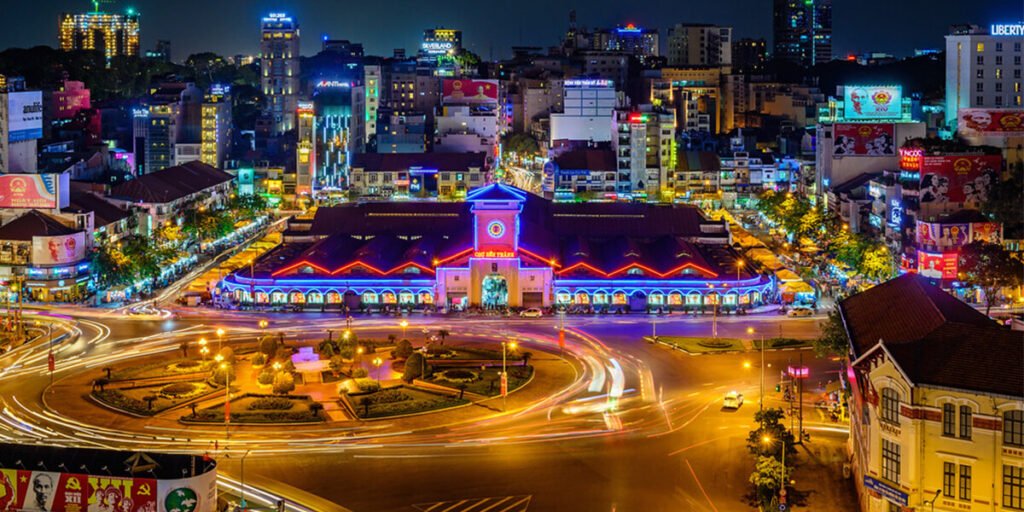Vietnam is rapidly emerging as a powerhouse in the global investment landscape, drawing billions in foreign direct investment (FDI) while prioritizing sectors like high technology, renewable energy, and logistics. As of the first eight months of 2025, Vietnam has attracted $26.1 billion in FDI, marking a 27.3% increase year-on-year. This surge underscores the country’s stability and opportunity amid global economic shifts. The Vietnamese government, through initiatives led by the Foreign Investment Agency, is actively courting private investments that emphasize innovation, environmental sustainability, and high value-addition. As Vo Van Chung from the agency notes, these priorities are designed to propel economic growth and boost Vietnam’s competitiveness on the world stage.
With a strategic focus on becoming Southeast Asia’s second-largest digital economy, Vietnam is leveraging government-backed programs to foster advancements in AI, blockchain, and 5G technologies. This article explores the exciting developments in these key sectors, highlighting why Vietnam is a prime destination for savvy investors. From hyperlocal innovations to massive infrastructure projects, the opportunities are vast and varied. Whether you’re an entrepreneur eyeing tech startups or a multinational corporation seeking sustainable energy ventures, Vietnam’s evolving ecosystem promises mutual growth through collaboration and innovation.
Vietnam’s High-Tech Boom: Pioneering AI, Blockchain, and Beyond
Vietnam’s high-tech sector is at the forefront of its economic transformation, with the government identifying 11 priority areas for breakthrough innovations, including hyperlocal solutions with global defensibility and sectors aligned with national strategies. The country is positioning itself as a rising hub for research and development (R&D) in high-tech manufacturing and digital technologies, attracting major investments from global giants. In early 2025, Vietnam emphasized high-tech investment and development, drawing contributions from international tech corporations to build a robust ecosystem.
A standout player in this arena is FPT Corporation, Vietnam’s largest listed tech firm, which is central to the nation’s AI ambitions. FPT has made remarkable strides in AI and smart manufacturing, launching initiatives like the FPT AI Factory—a $200 million investment equipped with NVIDIA’s advanced H100 Superchips. This facility represents a bold bet on sovereign AI, embedding an “AI-first” mindset across operations and aiming to elevate Vietnam’s position on the global tech map. In 2025, two of FPT’s AI factories were ranked among the world’s top 500 most powerful supercomputers, showcasing Vietnam’s growing computational prowess. FPT also showcased cutting-edge AI and semiconductor technologies at the AI-Semiconductor Conference 2025 in Hanoi, partnering with global leaders like NVIDIA and IBM to accelerate enterprise transformation.
Beyond FPT, the sector is buzzing with activity. Vietnam’s digital strategies for 2025 highlight trends in AI adoption, with over 500,000 IT workers supporting startups and established firms alike. Corporate M&A in technology has been dynamic, with fresh deals in 2025 reflecting investor interest in innovative applications. Even as some tech companies explore alternatives post-Vietnam, the country’s success in attracting billions from Samsung, Foxconn, and Intel solidifies its role as a manufacturing and innovation base. For investors, opportunities lie in semiconductors, AI-driven smart manufacturing, and blockchain solutions, all backed by government incentives for high-tech projects.
Renewable Energy Revolution: LNG, Hydrogen, and Sustainable Power
Vietnam’s commitment to sustainable development is evident in its renewable energy sector, where investments in liquefied natural gas (LNG), hydrogen, and related technologies are accelerating. The government is targeting a significant shift, with the revised Power Development Plan VIII aiming to add 15 LNG-to-power plants with a combined capacity of 25,625 MW by 2030. This is crucial for meeting a projected 12-13% rise in electricity demand by 2025, fueling a renewable investment boom.
Key policy moves, such as Resolution 70-NQ/TW in 2025, are eliminating institutional barriers to facilitate capital access, promoting diverse technologies like geothermal, ocean energy, and hydrogen production linked to offshore wind. Foreign investments are pouring in, exemplified by HDF Energy’s memorandum of understanding with Southern Power Corporation (EVNSPC) to boost green hydrogen power. Vingroup, a major conglomerate, has proposed ambitious renewable and LNG projects, with the first phase (2025-2030) targeting 20.5 GW at an investment of $20-25 billion.
The OECD Economic Surveys for Vietnam 2025 highlight the country’s net-zero pledge by 2050, with interim targets emphasizing low-carbon growth through renewables reaching 30.9-39.2% of electricity production by 2030. Annual investments of approximately $27 billion are required by 2030 to support oil, gas, and renewable transitions. Lessons from hydrogen strategies indicate that by 2025, production costs for blue and green hydrogen in Vietnam remain competitive, positioning the country as a regional leader. For global investors, opportunities abound in electric batteries, hydrogen infrastructure, and sustainable energy projects, all aligned with Vietnam’s green agenda.
Logistics Evolution: Building Global Supply Chain Resilience
The logistics sector in Vietnam is undergoing a rapid evolution, driven by foreign investments and ambitious infrastructure enhancements. The government aims to complete 3,000 kilometers of expressways by the end of 2025, with even grander plans extending to 2030. This infrastructure push is part of a broader revolution, including high-impact projects in roads, seaports, airports, and rail, to solidify Vietnam’s role in ASEAN supply chains.
Global players are fueling this growth; for instance, Emirates SkyCargo transported nearly 13,900 tons of cargo from Vietnam in 2024-2025, highlighting the sector’s momentum. Investments of $13.8 billion are planned for seaport expansions by 2030, targeting a cargo capacity of 1.1-1.4 billion tons. The 2025 infrastructure spotlight includes updates to public-private partnership (PPP) laws, simplifying investor appointments and reducing technical barriers. Vietnam’s government has also increased its 2025 infrastructure spending target to 7% of GDP, up from 6%, to accelerate these developments.
Trends for 2025 point to technological integration, improved efficiency, and market expansion amid foreign investment waves. Challenges like regulatory hurdles persist, but the sector’s transformation offers investors avenues in digital logistics, green transport, and supply chain optimization.
Investor Confidence Soars: A Prime Destination for Global Capital
Investor sentiment towards Vietnam remains overwhelmingly positive, with the EuroCham Business Confidence Index (BCI) for Q2 2025 reaffirming the country’s long-term potential. Nearly 72% of European executives surveyed recommend Vietnam as an investment destination, consistent with trends showing robust confidence. This aligns with broader surveys, where over 75% of European leaders view Vietnam as a top spot, bolstered by its 7.52% GDP growth in H1 2025—the highest in a decade.
Despite global uncertainties, Vietnam’s appeal lies in its stable FDI inflows—over $24.1 billion in the first seven months of 2025—and projections for 7% growth in 2025. European FDI in Europe dipped in 2025, but Vietnam bucks the trend, attracting businesses amid postponed plans elsewhere. To capitalize, investors should focus on local partnerships and innovation-driven projects.
Embracing Opportunities: The Path Forward for Vietnam Investments
Vietnam’s trajectory as a high-tech investment hub in Southeast Asia is clear: a blend of government support, innovative companies like FPT, and booming sectors in renewables and logistics. With FDI stability and high investor confidence, the stage is set for collaborative growth. As Vietnam eyes net-zero and digital leadership, now is the time to engage.




